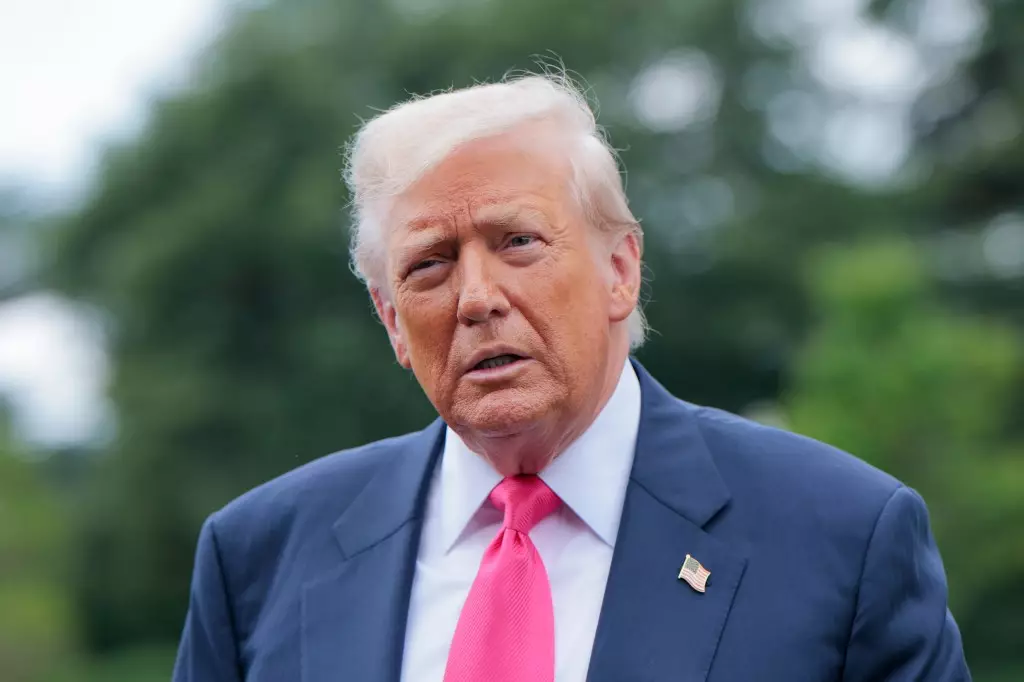In recent months, the sudden resurgence of tariff policies under Donald Trump’s leadership signals a shift toward aggressive economic nationalism. No longer content with traditional trade negotiations, Trump’s administration has reintroduced and expanded tariffs, wielding them as tools to reassert American dominance and pressurize economic partners. These moves demonstrate a strategic departure from pre-existing trade norms, often characterized by unpredictability and unilateral decision-making. This approach, while potentially beneficial for certain sectors of the U.S. economy, risks igniting a global trade war that could undermine international cooperation and destabilize markets.
Trump’s tariffs on countries like Canada, Mexico, and Brazil reveal a deliberate effort to send political signals as much as economic ones. His comments on Canada’s recognition of Palestinian statehood, for instance, show how tariffs are being deployed as diplomatic leverage, intertwining economic policy with foreign relations. Such tactics reflect a perception that economic strength can be wielded as a form of power—an assertion of dominance that may have long-term implications for the global order. Yet, this strategy also exposes a fundamental flaw: it undervalues the importance of stable, mutually beneficial relationships necessary for sustained economic growth.
Economic Consequences: Slowdown and Uncertainty in the US Market
The impact of this tariff blitz is evident not only in international diplomacy but also within the United States itself. Recent economic indicators paint a troubling picture. Job creation figures for July fell far short of expectations, adding only 73,000 new positions, and revisions to previous months’ data suggest a slowdown that could deepen if tariffs remain in place. Although some sectors related to entertainment showed resilience, broader indicators reveal a fragile economic recovery under threat from rising costs and market uncertainty.
The increase in tariffs drives up prices for consumers and businesses alike, creating inflationary pressures that could erode purchasing power and contribute to a cost-of-living squeeze. Companies, hesitant to expand or hire amidst tariff-related uncertainty, could see their growth impede. This self-inflicted economic restraint underscores how protectionist policies, if not carefully balanced, can stifle innovation, employment, and consumer confidence. The federal government’s own policies, including restrictions on immigration and cuts to certain government jobs, compound these effects, signaling a complex web of factors that threaten the resilience of the U.S. economy.
The Political Calculus: Tariffs as Tools for Foreign and Domestic Power
Trump’s tariff strategy is inherently political, often reflecting broader ambitions or grievances. His decision to levy harsh tariffs on Brazil, for instance, appears intertwined with geopolitical disputes rather than purely economic rationale. Targeting Bolsonaro’s Brazil amid internal political turmoil exemplifies how tariffs are transforming into instruments of influence—both coercive and symbolic.
Furthermore, the European Union’s tariff response and the ongoing review of tariff legality reveal a global challenge to the U.S. protectionist stance. The international community’s cautious approach highlights the risks of a tit-for-tat escalation, which could threaten the foundations of global trade institutions. Yet, Trump remains unwavering, viewing tariffs as a way to recalibrate U.S. trade relations, even at the risk of sparking retaliation. His assertion that recent trade deals might be “too late” underscores an inward-looking worldview—one that prioritizes short-term gains over long-term stability and cooperation.
The Future of Cultural and Economic Exchange in a Tariff-Driven World
Beyond traditional trade commodities, the threat of tariffs extending into cultural industries, such as film and television, underscores the far-reaching implications of this protectionist wave. The prospect of tariffs on movies and entertainment from outside the U.S. raises questions about the future of global cultural exchange, potentially isolating American media and stifling diversity.
The entertainment sector’s slight employment growth amid a sea of stagnation may be a fragile spark of hope, but it’s clear that the broader picture remains bleak. Tariffs are not only economic barriers but cultural ones, risking the stagnation or fragmentation of global creative industries. The long-term consequences could involve a retrenchment into national markets and a decline in cross-cultural dialogue, which are vital for innovation, mutual understanding, and soft power.
Ultimately, Trump’s tariffs represent more than just an economic tool—they are a reflection of a worldview that prizes national strength through economic self-sufficiency. While this might appeal to certain voter bases and political factions, it raises profound questions about the kind of global economy we are cultivating. As these policies evolve, the world watches closely, pondering whether protectionism is a passing phase or the blueprint for a new, uncertain chapter in international relations.
